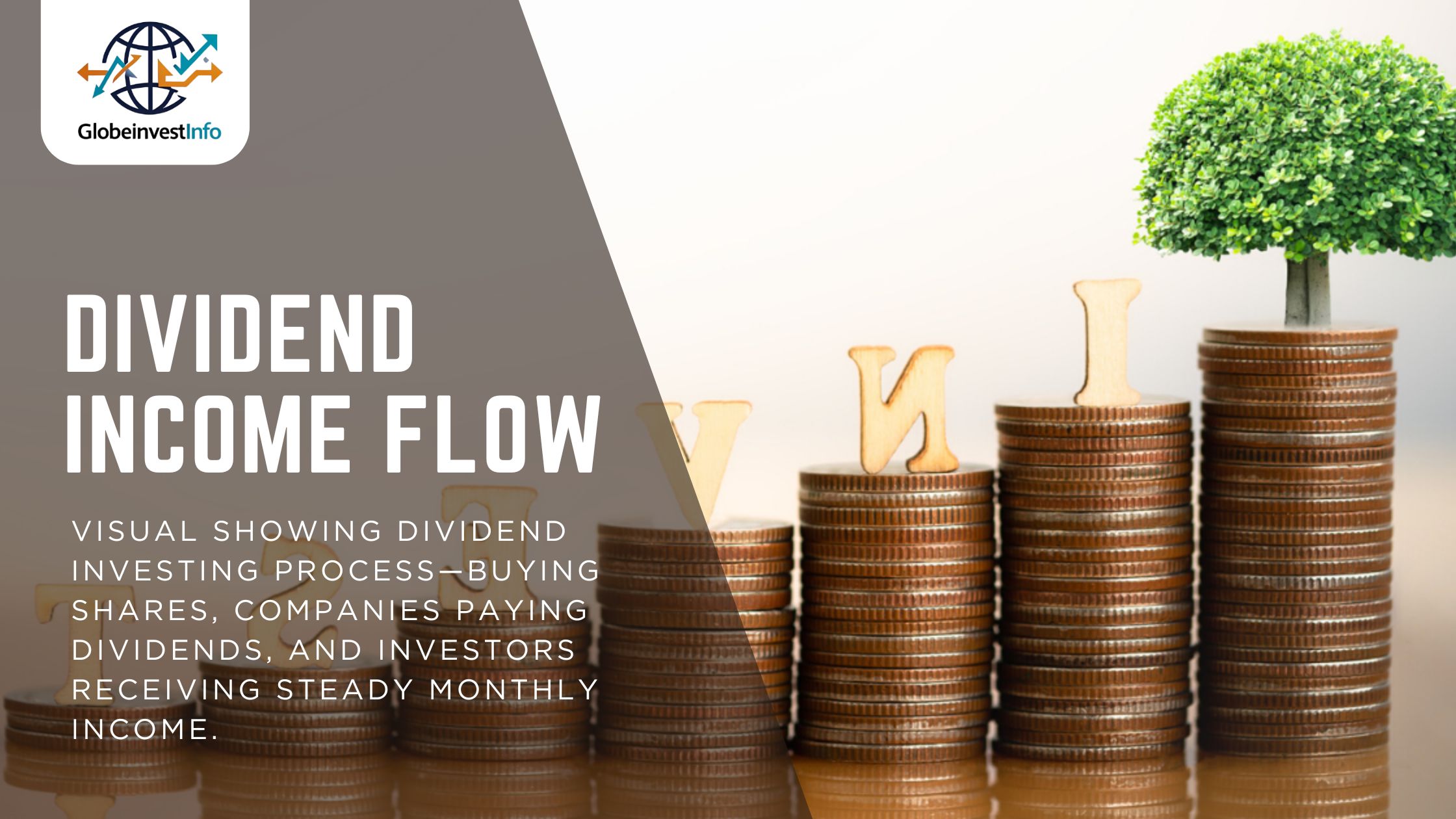Introduction
Many new investors struggle to find income-generating investments that pay regularly. Savings accounts yield little, and relying solely on retirement contributions can leave you cash-poor when you need regular money.
Without a dependable income stream, you may face anxiety about covering monthly expenses, especially during market dips or emergencies. Waiting for quarterly dividends might not align with your budgeting needs.
This guide shows you step-by-step how to build a dividend investing strategy that delivers consistent monthly income—even as a beginner—so your finances can flow smoothly month by month.
Quick Read
- Dividend investing offers passive income you can count on each month.
- Focus on stocks or funds that pay monthly or use ladders across pay dates.
- Understand yield, payout ratio, diversification, and risk before investing.
- Use DRIPs to reinvest automatically and grow your income over time.
- Start small, aim for reliable companies, and gradually build a monthly income stream.
What Is Passive Income?
Passive income refers to earnings you receive with minimal ongoing effort after the initial setup. Dividend investing falls squarely in this realm: you purchase shares once and the company does the rest—paying you money at regular intervals.
Dividend stocks typically distribute profits quarterly, but with thoughtful planning or selecting monthly‑payers (like Realty Income), you can turn dividends into a monthly income stream that feels almost like a paycheck.
Key Steps for Dividend Investing for Beginners: How to Earn Monthly Income
Step 1 – Set Your Income Goal and Estimate Required Capital
Decide how much you want to earn each month. For instance, to generate $1,000 /month at a 4% annual yield, you’d need approximately $300,000 invested. Reach 6% yield, and that requirement drops closer to $200,000.
Step 2 – Choose Monthly-Paying Stocks or Staggered Quarterly Payers
Some companies and ETFs pay dividends monthly. For example, Realty Income is known as “The Monthly Dividend Company” and distributes every month.
Step 3 – Diversify and Balance Yield vs Sustainability
High yields may look attractive but can be risky. Aim for a mix of reliable dividend growers (like Dividend Aristocrats or Dividend Kings) and some higher-yield options, while keeping an eye on payout ratio and financial strength.
Smart Strategies
Diversifying Income Streams
Don’t rely solely on dividend income—you can combine this with rental crowdfunding, bonds, or digital products. Mixing sources strengthens your overall passive income strategy.
Managing Risk
Reduce risk by diversifying across sectors (e.g. utilities, consumer goods, real estate) and using funds that cover many holdings. Monitor payout sustainability and company fundamentals over chasing yield.
Tax Considerations and Reinvesting
Dividends may be taxed as ordinary income—so their net value depends on your tax bracket. Using a DRIP (Dividend Reinvestment Plan) lets you automatically reinvest dividends to buy more shares—compounding growth without effort—even though you still owe taxes on them.
Pros & Cons Table
| Pros | Cons |
|---|---|
| Regular monthly cash flow improves budgeting | Requires large capital for meaningful income |
| More reliable than rental income or business operations | Risk of dividend cuts or market fluctuations |
| Hands-off after setup | High yields can signal unsustainable payouts |
| DRIPs compound returns over time | Dividends taxed yearly regardless of reinvestment |
FAQs
Q1: Can I really earn monthly income from dividends?
A1: Yes—by either investing in monthly-paying securities like Realty Income or building a diversified portfolio whose quarterly dividends overlap to cover each month.
Q2: How much money do I need to start?
A2: That depends on your target. To hit $1,000/month at 4%, you need about $300,000 invested; at 6%, about $200,000. Smaller goals require proportionately less capital.
Q3: Are there ETFs that pay monthly dividends?
A3: Yes—some ETFs, especially those holding REITs or income-oriented bonds, pay monthly. Always check the fund’s distribution schedule.
Conclusion
Dividend investing is an accessible and powerful way to create monthly passive income—even for beginners. By setting clear goals, selecting income‑paying stocks or funds, and using tools like DRIPs, you can craft a steady cash flow to meet your needs.
Ready to deepen your investing journey? Explore more strategies and expert insights at our Passive Income blog, where we break down smart ways to grow your income and secure financial freedom. Let us know what income goal you’re working toward—I’d love to support your next step.
Kelsey Johnson is a seasoned business writer specializing in strategy, marketing, and entrepreneurship. Her concise, insightful blogs help professionals drive growth and make smarter business decisions.

